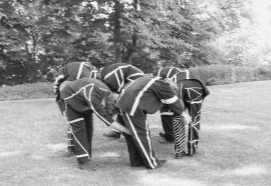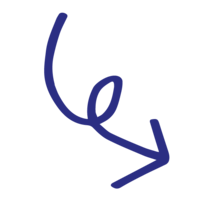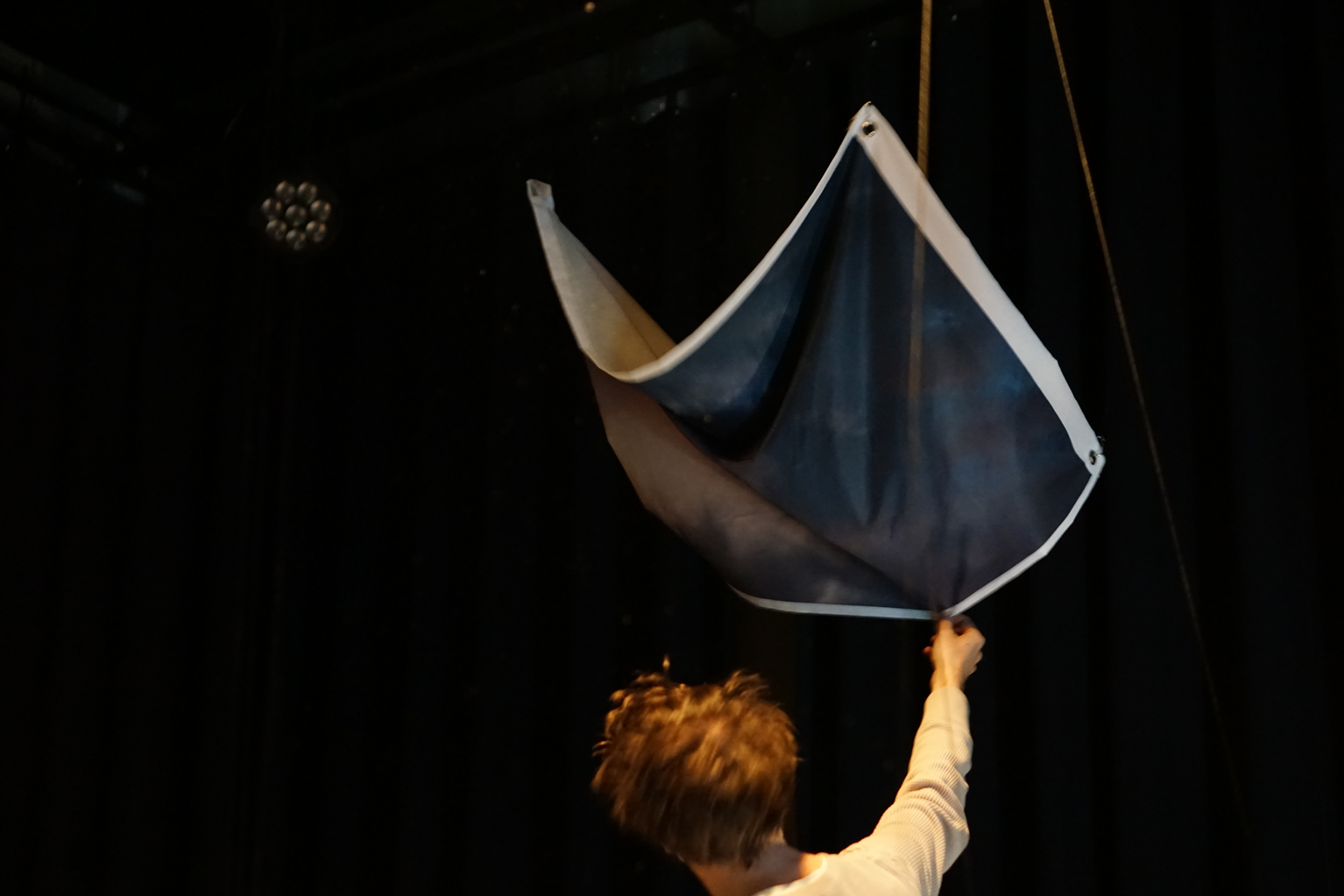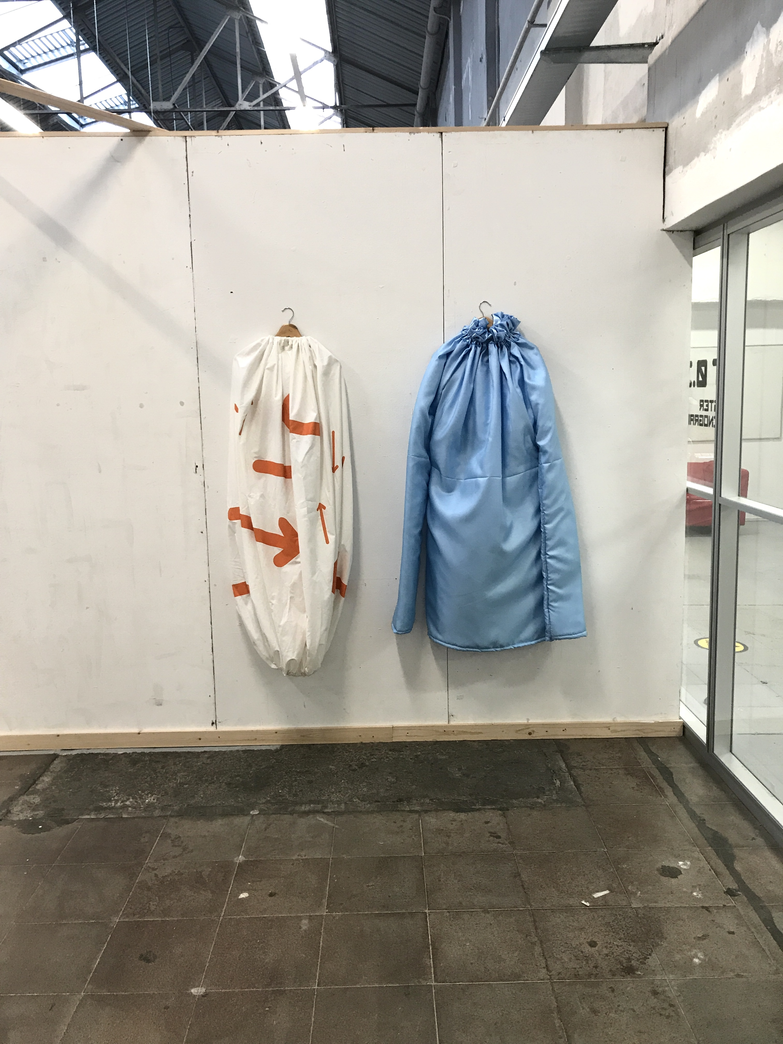This research catalogue starts with the following audio file.
Headphones are not recommended, unless you have wireless ones. If you are on Zoom whilst listening to the audio, it is good to mute yourself. You can press play when you feel ready.
"I think my interest is in liveness, the moment of an encounter — whether that is the moment of encounter in a theatre, or in a gallery or public site (when I am working in visual art), or the moment of encounter with the written word on a page. In particular I look for the way that an encounter with a work of art animates the space between the viewer and the object. One idea that is recurrent in my work is this idea of the co-opting of the spectator — inviting or forcing them to partly assume ownership over what you are doing."
— Tim Etchells (Imaginative Bodies, Guy Cools)
Through this collection I want to research the relation and codependency of spectator and the object. The work is created through a collaborative effort from the spectator(participant) and the material of which the work exist. Through this, the work(performance) only ‘exists’ when it is activated, done, put up, put on, hung up, turned on, etc. The material needs the spectator (and its body) and the spectator need the material in order for there to be something to perceive.
This collection is made of a series of experiments that each result in their own endless collection of outcomes. The collector sets the rules, but the spectator delivers the collectables. These collectables will be in the form of notes (which can be the instructions for a next performance), photographs, video and physical result/traces.In these situations the spectator changes its role to performer, author, activator, instigator and participant.
Work of Sarah van Lamsweerde
"When looking for a way to give better access to the big sculptures, the thought of a hybrid object emerged: between stair and pedestal, allowing visitors to reach the top of the sculpture but also temporarily transforming participants into live sculptures."
(research notes, Sarah van Lamsweerde)
Guide Anneke Kuilman with 'Rembo'(2005) by Bastienne Kramer in Rembrandtpark, Amsterdam Nieuw-West (NL)
Through fabric I try to record, influence and direct peoples movement in spaces.
The fabric takes the shape of the participant and the participant takes the shape of the fabric. Through me deciding (through sowing) what shape the fabric has, the participant is guided in a certain way. But by every body being different, the fabric also asjusts to the participants body. They adjust to each other.
As soon as the participants body takes of the fabric, or doesn't interact with it, it is shapeless. It's shape is created through movement.
Work of Cindy Moorman
"Het werk van Cindy Moorman karakteriseert zich als een doorlopend onderzoek naar menselijke verhoudingen. Hoe verhoud je je tot de ander? Wat is ervoor nodig om 'erbij' te horen? Dat zijn vragen die een rol spelen in haar werk."
Profile on Cindy Moorman (https://www.welikeart.nl/kunstenaar/cindy-moorman/)
Notes from the spectator who became note-taker:
— Anna is playing with the pieces as if they were kites.
— Collaborative effort in order to hang the cloths
— Everybody wants to hang everything
— Sarah > marrionette > let drop
— Maria & Serge creating a landscape
The participant enters a space where different shapes in different colours are taped on the floor and walls. In matching colors, pieces of fabric are spread out in the space. Through wearing the wearable items of fabric and moving through the space, the particitpant can find the matching piece of tape. By doing this, the participant is directly relating his body to the surrounding space. Each time two participants entered the space at the same time. During this experiment I tried to observe what happened; how they moved, what choices they made, how they choose, if they collaborate or stay very individual, if my instructions were clear enough, etc.
Shifting Perspectives
(bodies, clouds, leaves)
Through a collaborative effort, we use our bodies and our gaze to manipulate the landscape we find ourselves in.
Who is watching who?
Spectator vs participant.
Are there still spectators when the performance is created by those same spectators?
Within this research through making, the following questions are necessary to answer before each performance:
— What do I want the spectator to experience?
— Do they have a common goal? (can the outcome be success or failure?)
— How can I guide the spectator?
— What does the spectator need to be guided?
— How do I collect movement, situations, actions, information?
— How do spectators respond to certain instructions?
— How do I observe and notate situations that happen?
— How does the spectator know it will be a performer?
o Is it necessary for them to know their role?
o What is their role exactly?
Franz Erhard Walther
- 'the body decides'
- inviting the spectator to participate
- collaboration between bodies
"Already in his early work, Walther dealt with the coincidental and the processual as design principles in various media. At the same time, fabric — until then an unusual artistic material — became a source of innovation for Walther, from which the "activation objects" emerged [..] The body becomes a medium in that it transforms life processes into images."
(Exhibition in Haus Der Kunst: Franz Erhard Walther - Shifting Perspectives. https://hausderkunst.de/en/exhibitions/franz-erhard-walther)
— what is the future of tactility?
— how can i identity with non physical garments?
— digital tactility. seeing material that has a tactile quality, but doens’t exist as a physical being
— familiarity with ‘digital material’, ‘digital touch’?
— digital haptic eye?
— wearable garments without body
— how do we relate (with our haptic eye) to immaterial(?) material?
— how do we relate (with our haptic eye) to digital generated bodies?
— is that the same as when i would film a physical existing material?
notation of ideas
An attempt to execute ideas without a physical result. Can ideas be created without the physical act of making something? Do they still exist? Can we see a performance without it actually happening?
Through drawing, writing and talking I showed my ideas for the performances I would -at first- have liked to create for this presentation. I created an intimate setting where the audience was relatively close and on the same seating level as me. Although there was still a distinction between stage and audience, there was a sense of being in the same room. An office or aterlier perhaps.
Take aways:
- an unprepared performance does not mean no performance
- unexecuted ideas does not mean no work
Work of Anne Teresa de Keersmaeker
Repetition of movement
Using only four movements
Can i see this as a collection? or a way of collecting?
Inspiration for my own collection.
Can repetition form a collection?
Work of Katja Heitmann
Archiving movement.
Touched by the experience of Motus Mori, the archive. Very intimate, honest and special to see your own movements through someone else. And to be linked to someone elses movement gives a strange feeling of connection, without knowing who this person is. Because of the personal quality of the movement and stories. You become part of a collective and live archive.
































